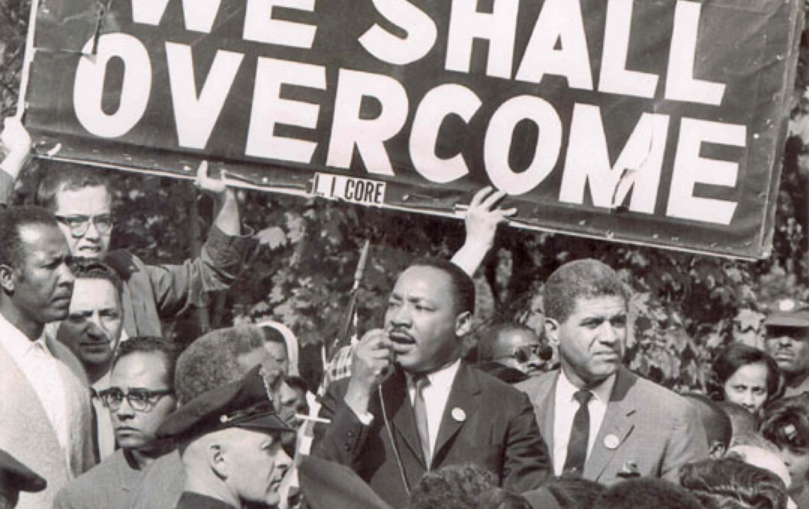Table of Contents
AT WAR
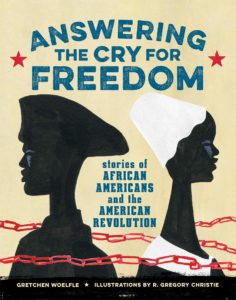 |
By Gretchen Woelfle, Answering the Cry for Freedom (Calkins Creek, 2016) tells the stories of 13 African Americans who lived through or fought in the Revolutionary War, among them James Armistead Lafayette, Phillis Wheatley, Elizabeth Freeman, and more. For ages 9 and up. |
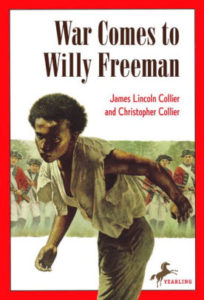 |
In James Lincoln Collier’s War Comes to Willy Freeman (Yearling, 1987), the story of a 13-year-old free African American girl during the Revolution, Willy’s father has been killed by the Redcoats and her mother taken as a prisoner to New York City. Willy, disguised as a boy, sets out to find her mother and ends up at the Fraunces Tavern, a favorite haunt of George Washington. For ages 8-12. |
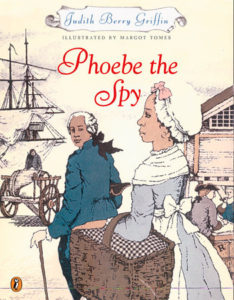 |
Judith Berry Griffin’s Phoebe the Spy (Puffin, 2002) is the story of Phoebe Fraunces, a young black girl who saves the life of George Washington when she discovers a poisoning plot. For ages 8-12.
|
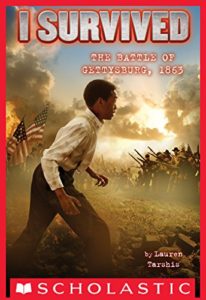 |
In Lauren Tarshis’s I Survived the Battle of Gettysburg, 1863 (Scholastic, 2013), Thomas and his sister Birdie, escaped slaves, are heading north toward freedom, when they encounter a Union soldier and are invited to accompany his regiment. The regiment, however, is marching to Pennsylvania, and is about to fight in the most famous battle of the Civil War. For ages 7-10. |
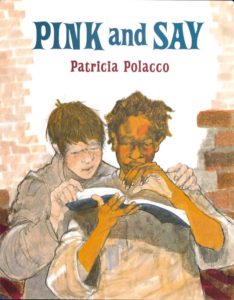 |
In Patricia Polacco’s heartbreaking historical picture book Pink and Say (Philomel, 1994), both the title characters are young Union soldiers – Say is white, and Pink black. Pink saves Say, who has been wounded on the battlefield, and takes him home to his mother in Georgia to heal. Eventually the two are captured by Confederate soldiers and sent to Andersonville prison, where Say survives, but Pink is hanged. Based on a true story. For ages 7-10. |
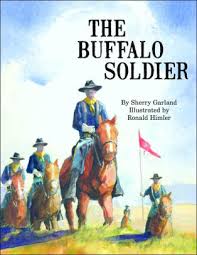 |
Sherry Garland’s The Buffalo Soldier (Pelican, 2006) is the fictional story of a newly freed slave who joins an army cavalry regiment and becomes a “buffalo soldier,” protecting western settlements from “Indians and bandits.” (Discuss.) For ages 8-12. For more info, see Buffalo Soldiers at History.com. |
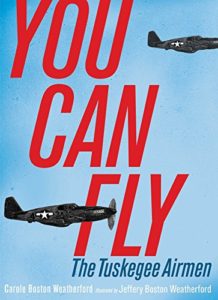 |
Carole Boston Weatherford’s You Can Fly (Atheneum, 2017) is the story of the Tuskeegee Airmen, told in poems, with scratchboard illustrations based on World War II photographs. For ages 9-12.
|
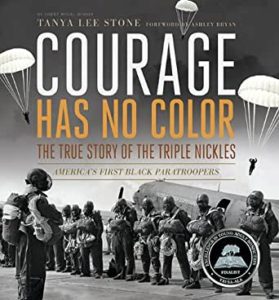 |
Tanya Lee Stone’s Courage Has No Color (Candlewick, 2013) is an account of the Triple Nickles, America’s first black paratroopers, little-known heroes of World War II. Illustrated with wonderful period photos. For ages 10-14.
|
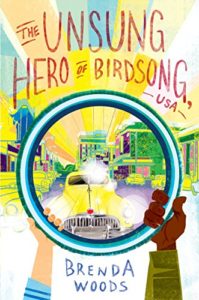 |
In Brenda Woods’s The Unsung Hero of Birdsong, USA (Puffin, 2020), 12-year-old Gabriel Haberlin, riding his new birthday bicycle, is nearly killed in a car accident – but is saved by Meriwether Hunter, a mechanic who works in Gabriel’s dad’s auto shop. Gabriel soon learns that Hunter is a war hero – he served in the army’s all-black tank battalion, the Black Panthers, in World War II – and also learns about the bigotry and racial prejudice that leads him to keep the fact quiet. For ages 10-13. |
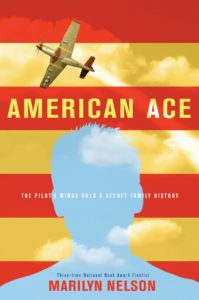 |
In Marilyn Nelson’s novel in verse American Ace (Dial, 2016), Connor’s Italian nonna has died, leaving a letter to Connor’s father revealing that he is not the biological son of her husband, but the child of an American who died during World War II. The only clues to his identity are a class ring and a pair of pilot’s wings. Connor sets out to solve the mystery, eventually discovering (spoiler!) that his grandfather was one of the famous Tuskegee Airmen. For ages 12 and up. |
GROWING UP BLACK
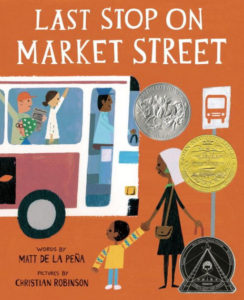 |
Matt de la Pena’s Last Stop on Market Street (G.P. Putnam’s Sons, 2015), winner of the Newbery Medal, follows a young black boy and his grandmother as they travel through their very diverse city, finding beauty in it as they go. For ages 4-8. |
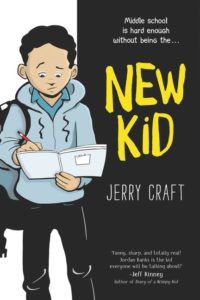 |
In Jerry Craft’s graphic novel New Kid (Quill Tree Books, 2019), a Newbery Medal winner, art-loving seventh-grader Jordan has been sent by his parents to the upscale Riverdale Academy, where he is one of the few enrolled black students. Jordan struggles with adjusting to two very different social milieus – at school, where there are problems with racism and microaggressions, and back home with friends in his Washington Heights neighborhood – plus finding out how to remain true to himself. For ages 8-12. |
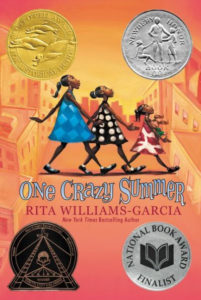 |
In Rita Williams-Garcia’s One Crazy Summer (Quill Tree Books, 2011), Delphine, Vonetta, and Fern travel cross-country from Brooklyn to spend the summer with their mother, Cecile, a poet, who left them seven years ago to find a new life in California. It’s 1968 – a year of great civil unrest – and Cecile enrolls the girls in a day camp run by the Black Panthers. Themes are racism, injustice, black pride, and the meaning of family. For ages 9-12. |
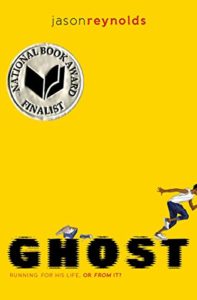 |
Jason Reynolds’s Ghost (Atheneum, 2017) is the story of young Castle Cranshaw (a.k.a. Ghost), a champion runner – who finds that no matter how fast he is, he’s can’t run away from his painful past. Issues include drug abuse, theft, gun violence, honesty, and anger. The first of a series for ages 10 and up.
|
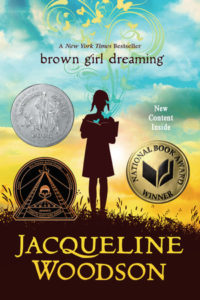 |
Jacqueline Woodson’s Brown Girl Dreaming (Puffin, 2016), a National Book Award winner, is a memoir in verse about growing up in the 1960s, in the days of the Civil Rights Movement, in part in the North and in part in the segregated South. For ages 10 and up.
|
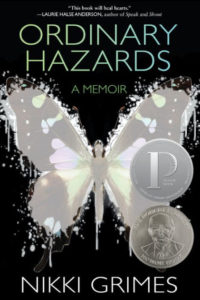 |
By Nikki Grimes, Ordinary Hazards (Wordsong, 2019) is a memoir in verse, a story of trauma, trouble, and self-discovery, all unfolding in Civil-Rights-era America. For ages 12 and up. See The Poetry Zone: Nikki Grimes for many more wonderful books.
|
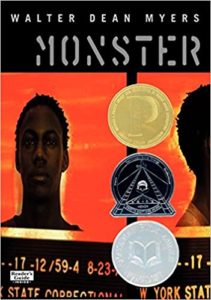 |
In the multi-award-winning Monster by Walter Dean Myers (HarperCollins, 2009), 16-year-old Steve Harmon is on trial for his life for his role in the fatal shooting of a convenience store owner. As he sits in the courtroom, Steve chronicles the proceedings in the form of a movie script, alternating with his journal entries. For ages 12 and up.
|
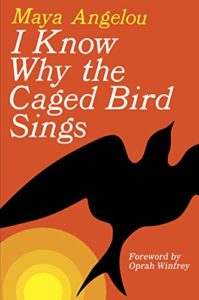 |
Maya Angelou’s I Know Why the Caged Bird Sings (Ballantine, 2009) is a powerful, joyous, and painful memoir, written when Angelou was challenged to write an autobiography that was also literature. She succeeds superbly, exploring such subjects as identity, rape, racism, and the power of writing. On many high-school and college reading lists. For teens and adults. |
